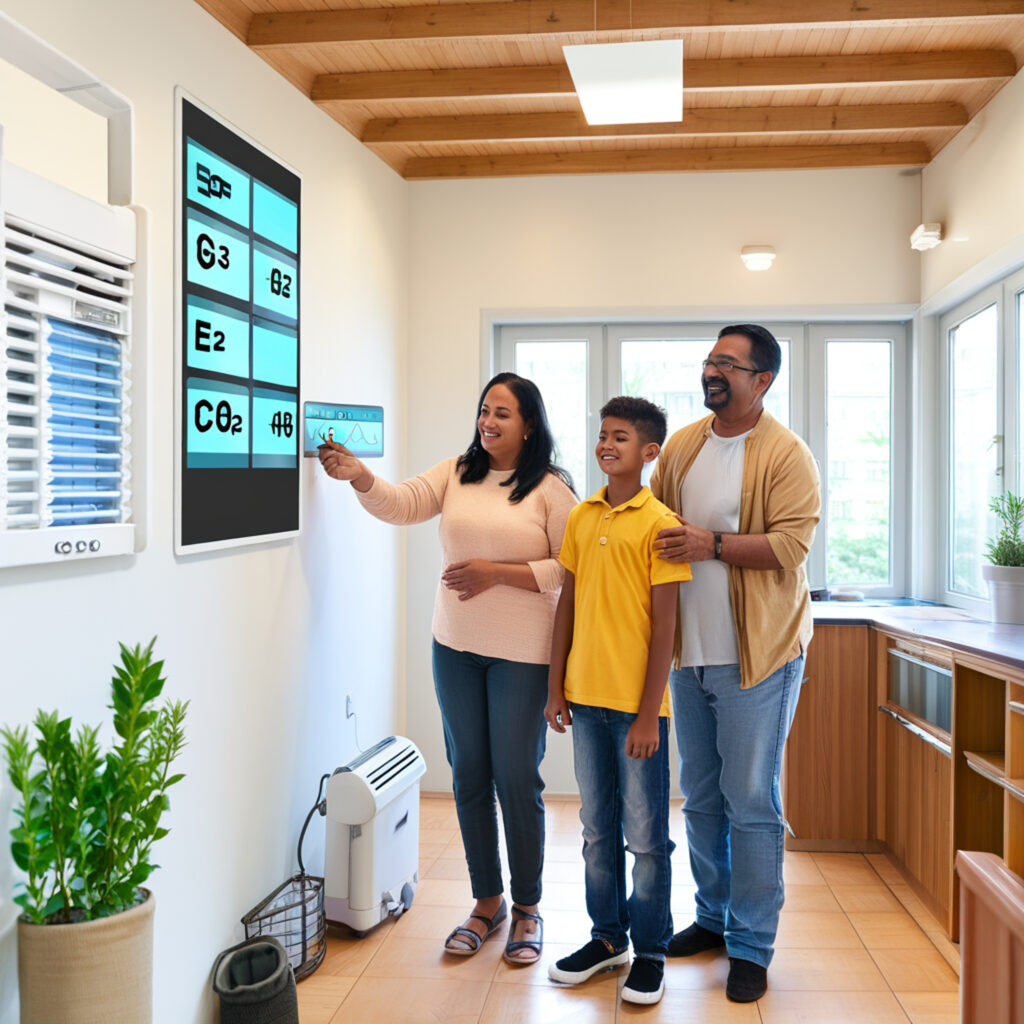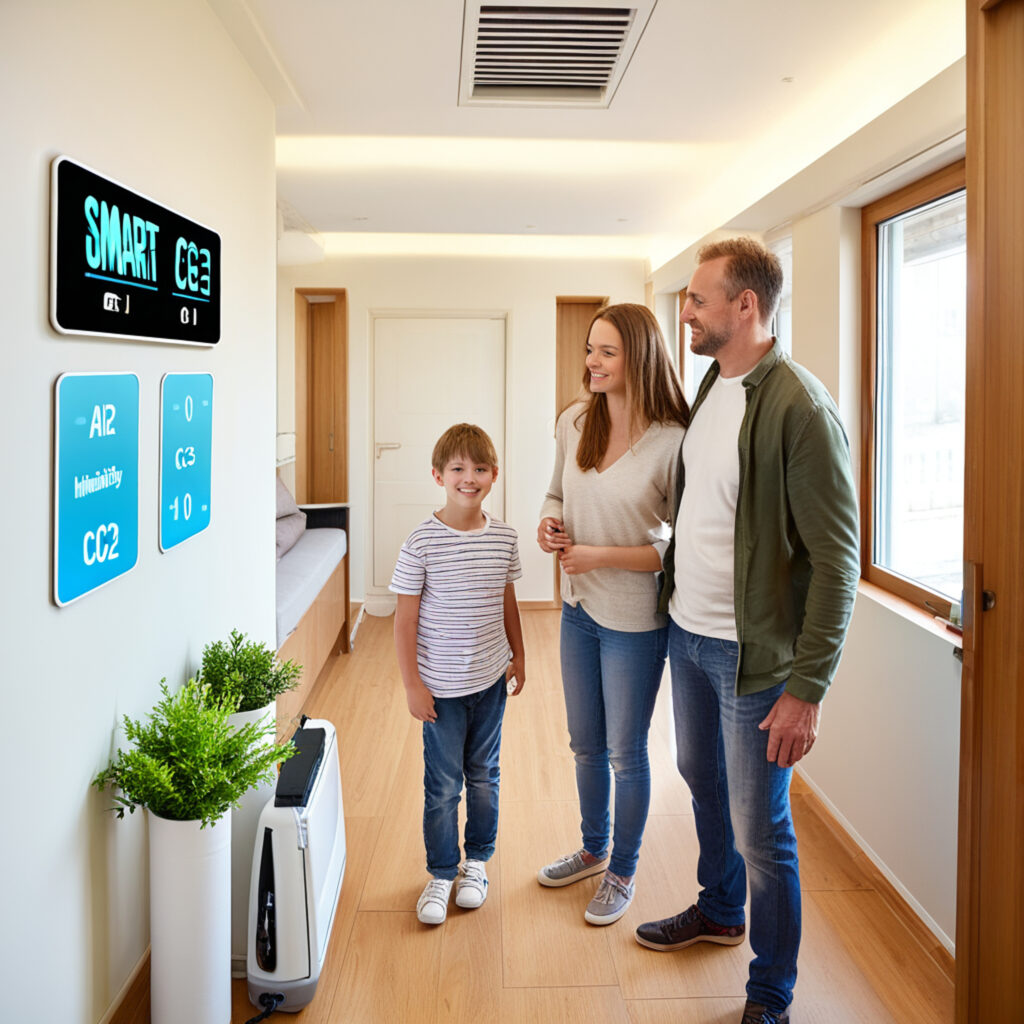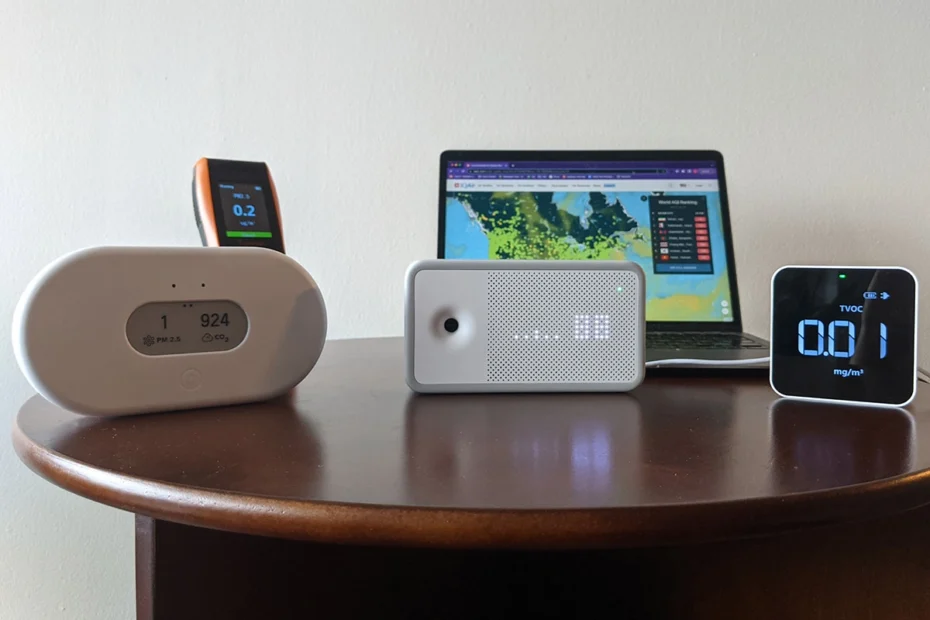US air quality has improved by almost every measure since 1980. But what about the air inside our homes, especially in our basements? Most people don’t know about the pollutants that exist below their feet.
Air quality tests in homes often reveal troubling levels of various contaminants. The average radon level in American homes sits at about 1.3 pCi/L. The EPA suggests getting professional help at the levels hit 4 pCi/L. Gas stoves found in millions of US homes release harmful nitrogen oxides. Poor ventilation can also cause high carbon dioxide levels. These problems are systemic in basements, which makes a reliable indoor air quality monitor crucial for every home.
Smart technology now lets us check our home’s air quality accurately. This piece will help you find the best devices and methods to monitor your basement’s air quality. Your family can breathe cleaner, safer air throughout your home.
Why basement air quality matters
Your basement’s air might be quietly changing the air quality throughout your home. Research shows that basement air can be up to ten times more polluted than the rest of your house. The situation becomes more worrying because up to 50% of the air you breathe on your first floor comes straight from your basement.
Common pollutants found in basements
Basements are home to many contaminants that can hurt your health. Volatile organic compounds (VOCs) are 2 to 5 times higher indoors than outdoors. These levels can spike to 1,000 times higher when you do things like strip paint. The chemicals come from everyday items like paints, cleaning supplies, and hobby materials.
Your basement might also contain dangerous gases like radon—a colorless, odorless radioactive gas that leads to 15,400-21,800 lung cancer deaths annually. Carbon monoxide, another invisible danger, causes about 450 deaths and over 15,000 emergency department visits yearly.
Damp conditions create a perfect breeding ground for mold and dust mites. Research shows that home dampness and mold contribute to about 21% of current asthma cases in the United States.
Health risks of poor air quality
Bad basement air can trigger many health issues. Here’s what to watch for:
- Headaches, dizziness, and fatigue
- Eye, nose, and throat irritation
- Respiratory issues like coughing and wheezing
- Allergic reactions and skin irritation
- Memory impairment and difficulty concentrating
Poor basement air quality can lead to serious problems over time. Radon exposure ranks as the second leading cause of lung cancer in non-smokers. Some VOCs can harm vital organs like your liver, kidneys, and central nervous system. Children face even bigger risks because poor housing quality affects their respiratory health substantially.
Why basements are more vulnerable
Basements face unique air quality challenges. The underground location creates cooler temperatures that boost humidity and moisture problems. Mold thrives in this environment, especially when relative humidity goes above 50%.
Limited natural ventilation makes things worse because basements have fewer windows and restricted airflow. Pollutants build up and get stale without proper air circulation. The stack effect pushes warm air up through your home, which means basement pollutants don’t stay put—they travel upward throughout your house.
An indoor air quality monitor helps you spot these hidden threats before they affect your family’s health. Regular testing lets you catch problems early and fix them before anyone shows symptoms.
Top smart devices to monitor basement air

The right monitoring equipment will help you improve your basement’s air quality. After testing many devices, I found five outstanding options that detect various pollutants effectively.
AirGradient One: Best for detailed tracking
The AirGradient One gives you a complete indoor air quality monitoring system that tracks six common indoor pollutants: nitrogen oxides (NOx), carbon dioxide (CO2), total volatile organic compounds (TVOC), and three sizes of fine particulates (PM1, PM2.5, and PM10). This device stands out with its high-quality NDIR sensor for CO2—the gold standard in consumer-grade monitoring. Its Plantower PMS5003 laser particle counter delivers accurate particulate readings through laser scattering technology. The beautifully designed physical interface comes with ten color-changing LEDs that show air quality instantly, from green (good) to purple (horrible).
Airthings View Plus: Radon detection built-in
The Airthings View Plus stands out among basement monitors because it’s the only one that detects radioactive radon gas. The device measures six additional factors: PM2.5, CO2, VOCs, humidity, temperature, and air pressure. Radon detection plays a vital role since it’s the second leading cause of lung cancer among non-smokers, taking more than six times the lives than home fires and carbon monoxide poisoning combined. You can place this device anywhere, thanks to its six AA batteries that last about two years. The customizable eInk display shows your chosen measurements, while the app provides historical data and individual-specific tips.
Temtop M10i: Budget-friendly option
The Temtop M10i makes a great choice if you want an affordable option. This compact cube-shaped device tracks PM2.5, HCHO (formaldehyde), TVOC, and calculates an overall Air Quality Index. A fourth-generation PM2.5 laser sensor delivers accuracy of ±10% (100-500 μg/m3). The built-in fan keeps air moving through the sensors to provide up-to-the-minute data. The clear, readable display and color-coded LED indicator let you check your air quality quickly.
SAF Aranet4: Reliable CO2 monitoring
The SAF Aranet4 shines at carbon dioxide monitoring with remarkable accuracy (±40 ppm ±3% at 400-2000ppm range). CO2 levels deserve your attention because at 1000ppm, your cognitive abilities drop by 15%, and at 1400ppm, they plummet by 50%. The device uses non-dispersive infrared (NDIR) sensor technology—the most precise CO2 reading method available—which detects carbon dioxide without interference from other gases. The e-ink display helps the battery last up to four years.
IQAir AirVisual Pro: Great for visual learners
The IQAir AirVisual Pro’s large 5″ LCD screen makes it ideal for people who like visual data. Professional-grade sensors and high-precision laser technology measure PM2.5, CO2, temperature, and humidity. This monitor’s unique feature shows both indoor readings and outdoor air quality data from your nearest official station. The device analyzes your readings over time and suggests ways to improve air quality. While it measures only two pollutants (PM2.5 and CO2), it excels at presenting data clearly.
How to use air quality monitors effectively
Your indoor air quality monitor needs proper setup and usage to give accurate readings. The purchase is just the beginning—you must know how to use these devices properly to get meaningful results.
Where to place your monitor
The best spot to position your monitor is where you spend most of your time in the basement. This gives you a true picture of the air you breathe regularly. Your device needs:
- A solid surface at breathing height
- Space at least 1 meter (3.3 feet) from humidifiers, heaters, or fans
- Clearance of 5-10 centimeters from walls, away from corners
- Protection from direct sunlight and areas with high humidity
Your monitor’s placement matters greatly—it should measure the overall environment rather than specific spots in your basement.
How to read and interpret data
Long-term trends tell more about your basement’s air quality than single spikes in readings. You can link changes to specific events—to name just one example, yesterday’s candle might cause a PM2.5 spike, while poor ventilation often leads to gradual CO2 increases when people occupy the space.
Using dashboards and mobile apps
Quality monitors typically connect to smartphone apps that show immediate readings and past data. AirNow’s app lets you save multiple locations quickly, while IQAir’s AirVisual shows pollution forecasts up to seven days ahead. The Airthings app stands out with its radon level tracking—a vital feature for basement monitoring.
Setting up alerts for dangerous levels
Your alert thresholds need careful configuration. You might set CO2 warnings at 1,000 ppm since cognitive function starts declining at this level. Apps like South Coast AQMD send email notifications during severe events. This active monitoring helps you tackle air quality issues before they become serious problems.
Extra steps to improve basement air

Your basement’s air quality can improve with practical interventions. These solutions target the mechanisms of common air problems.
Ventilation and dehumidifiers
Good basement air needs proper ventilation. You can substantially improve airflow by installing exhaust fans or extending your HVAC system to expel stale, contaminated air. Energy recovery ventilators (ERVs) offer another option that substitutes stale air with fresh air while maintaining temperature control.
Mold growth stops with humidity levels between 30-50%. A quality dehumidifier takes out excess moisture and eliminates musty odors. Modern units come with auto-humidistats that save energy by shutting off once they reach desired humidity levels.
Air purifiers and filters
Air purifiers remove 99.97% of airborne particles down to 0.3 microns. Dust and mold spores typically range between 2-10 microns, which makes these devices excellent at creating cleaner basement environments.
The best purifiers combine HEPA filters to capture particulates with activated carbon filters that neutralize odors and VOCs. Place your purifier in a central location with five centimeters of wall clearance to optimize airflow.
Sealing cracks and leaks
Quick action on foundation cracks stops moisture and gases like radon from entering. Small hairline cracks need polyurethane injection kits. Larger problems might need budget-friendly waterproofing.
Gaps around windows, doors, and utility penetrations need weatherstripping or caulk. The rim joist area, where your house frame meets the foundation, needs special attention.
Time to ask for help
Some situations need expert help, even with your best DIY efforts. You might need professional assistance with extensive mold growth, foundation cracks that keep leaking after sealing, or high radon levels that won’t go down.
Experts provide detailed solutions like exterior waterproofing, foundation repairs, or whole-house ventilation system installations.
Conclusion
Your family’s health depends on keeping track of your basement air quality. This piece shows how basement air affects your whole home. Up to 50% of first-floor air comes from below, so your basement’s air flows into every room above it.
Modern monitoring devices give us a clear view of hidden threats we couldn’t see before. You have several great options to track the air you breathe every day. The complete AirGradient One, the radon-detecting Airthings View Plus, and other quality devices work well. All the same, just having a monitor won’t cut it – you need to place it correctly and understand what the readings mean.
Once you get your baseline readings, you might find worrying levels of VOCs, particulates, radon, or too much moisture. You’ll need to take steps like better ventilation, dehumidifiers, air purifiers, and sealing cracks. While you can handle many problems yourself, some cases need professional help, especially with ongoing radon or serious mold issues.
We stay indoors almost 90% of the time, mostly at home. The air we breathe affects how well we think, breathe, and feel overall. Your basement might feel separate, but its air moves through your entire home. Money and time spent on tracking and improving your basement’s air quality will help keep your family healthy and give you peace of mind for years.
